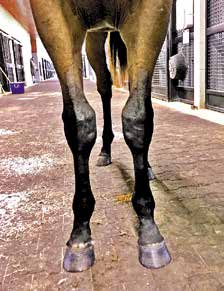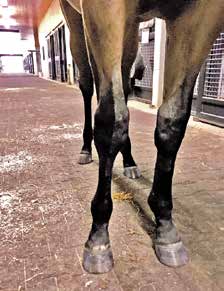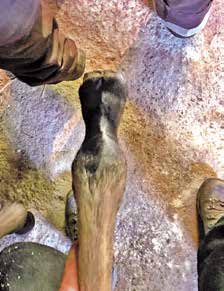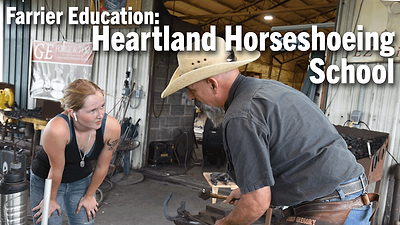At the breeding farms, one of the primary jobs of the farrier is to predict, identify, and advise on the development of equine anatomy. It is essential for breeders to stay diligent in this regard, whether it be through the farrier, veterinarian, or farm management.

I believe the ideal situation is a combination of all three. The key component is, of course, the people who see the developing horses on a day-to-day basis. The young horse can change almost right before our eyes; therefore, it becomes important that the eyes which see them most become ever wary to the signals of developmental problems.
The easiest way to predict which direction a horse is evolving is by seeing that horse every day and recognizing the changes that are happening. This depends largely on how much they are handled. If one cannot walk up to a foal, weanling, or yearling comfortably, then hold and lead them, it will be many times harder to get the views that a horseman needs to evaluate anatomy. To gain insight into a horse’s conformation, we must be able to see that horse standing comfortably from the front, back, and side. This alone is also not enough. We should also see it walking toward us and away with its head in a normal position relative to the stride—not walking at us in a zigzagging path or fighting the lead rope with its head. Without some prior handling, this becomes very difficult.
It is also important to realize that the perception of anatomy changes based on one’s line of sight. For example, in Fig. 1, the view is directly in front of the horse’s chest. All looks pretty good from this vantage point. Fig. 2 shows the same horse (which hasn’t moved) when viewed from directly in front of the left knee. Now the alignment of that left front hoof doesn’t look as good as it did moments before. The only difference is that I moved two steps sideways.
When eye-lining a front leg (Fig. 3), it is easier to pull the leg under our own eyes than it is to gain a line of sight while keeping the leg in a natural position. The fetlock varus (toe-in) tendency of the same leg (Fig. 4) is not as readily evident when viewed from a poor angle.



Hind legs are no exception and should be considered as individuals when one is looking at their conformational aspects. Most foals tend to lean their hind end toward the handler when walking. If the person leading that horse is walking directly away from you when this happens, it means you are no longer getting a proper view of that horse and that you need to shift your position. When leading foals, it is often necessary to lead the dam as well, allowing the foal to walk more willingly in the direction you need it to.
Opinions about conformation are divergent, having been influenced either positively or negatively by horses those people have been associated with previously. Adding to this divergence is the different viewing angle people might have of the same horse. When two people are standing side-by-side, it is possible that they would have a completely different opinion on the conformation of the same horse in the same moment. This can happen even if they agree on the aspects of good and bad tendencies.
Every foal has a “best possible” outcome and some are further up the scale of ideal than others, obviously. Critical and accurate evaluation is essential to raising the most optimally conformed yearling from any individual foal. Realizing where you are looking from is one way to achieve a critical and accurate evaluation.
Well, at least from this point of view.
Veteran Standardbred farrier Steve Stanley of Lexington, Ky., authors a monthly column for Hoof Beats, the official harness racing publication of the U.S. Trotting Association. The American Farriers Journal Editorial Advisory Board member offers plenty of practical advice that will be of special interest regardless of the type of horses that you work with. Click here to read more from Steve Stanley's Hoof Beats series.








Post a comment
Report Abusive Comment